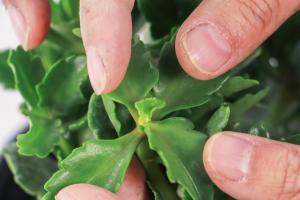When to Prune Newly Planted Fruit Trees
Planting fruit trees is an exciting and worthwhile investment for any gardener. But the task doesn't end with just planting; you'll have to maintain them regularly to keep them healthy and fruitful. Pruning is one of the essential maintenance practices to ensure healthy growth, strong branches, and maximum fruit yield. However, when it comes to pruning newly planted fruit trees, timing is crucial. Here are some tips to help you decide when to start pruning your newly planted fruit trees.
The Right Time to Prune New Fruit Trees
Ideally, pruning newly planted fruit trees should begin in their second year of growth. However, you may remove dead, diseased, or damaged stems and branches at any time. Pruning at the right time helps to stimulate new growth, improve the fruit size and quality, and control the tree's shape and size. It's crucial to avoid pruning your newly planted fruit trees heavily in their first year. While it's necessary to remove any broken branches, leave the remaining stems and branches alone to allow the tree to establish its root system first.
Pruning Techniques for New Fruit Trees
When pruning new fruit trees, it's essential to follow the right technique. The first step before cutting anything is to sanitize your pruning tools, to prevent the spread of disease. Start by removing water sprouts, which are small, thin branches that emerge from the trunk, as they don't bear fruit and may weaken the tree. Next, remove damaged or diseased branches, making a clean cut just outside the collar, the raised spot where the branch meets the trunk. Keep in mind that leaving a stub or cutting too close to the trunk may result in insect and disease infection. Lastly, remove any crossing or rubbing branches, and aim to maintain a central leader and evenly spaced branches around it for optimal sunlight exposure.
What to Avoid While Pruning Newly Planted Fruit Trees
While pruning your newly planted fruit trees, it's essential to avoid some common mistakes that may harm your trees. Firstly, don't over-prune – the goal is to remove only what's necessary to maintain the tree's shape and structure. Removing too many branches can weaken the tree and reduce fruit production. Secondly, avoid pruning in the early spring when the tree's buds are swelling, as this can slow down growth and reduce fruit production. Lastly, avoid heading back the central leader or main branches, as this can cause the tree to develop multiple leaders, which will make it harder to prune and maintain.
Conclusion
Pruning newly planted fruit trees is a crucial maintenance practice that helps to maintain their health, productivity, and appearance. While the right timing is crucial to getting the most benefit from pruning, it's also crucial to follow the right technique and avoid common mistakes. With these tips, you can prune your newly planted fruit trees like a pro and look forward to healthy growth and abundant yields.

 how many times do yo...
how many times do yo... how many planted tre...
how many planted tre... how many pine trees ...
how many pine trees ... how many pecan trees...
how many pecan trees... how many plants comp...
how many plants comp... how many plants can ...
how many plants can ... how many plants and ...
how many plants and ... how many pepper plan...
how many pepper plan...

































